Introduction
Power amplifiers are essential components for sound and music enthusiasts who want to experience high-quality and loud sound. A high-quality power amplifier ensures that the audio signals remain pristine and free of any noise or distortion. The 200W RMS power amplifier is a popular choice for professionals and enthusiasts who demand high-quality sound and reliability. In this article, we will discuss the construction of a 200W RMS power amplifier using D1047 and B817 transistors.
The heart of any power amplifier is the transistor. The D1047 and B817 transistors are popular choices for power amplifiers due to their high gain and power handling capability. These transistors are complementary NPN and PNP bipolar transistors that can provide ample power to drive loudspeakers and other audio devices. In addition, the D1047 and B817 transistors are widely available and cost-effective, making them an ideal choice for building power amplifiers.
The 200W RMS power amplifier using D1047 and B817 transistors follows a class-AB amplifier design. This design combines the advantages of class-A and class-B amplifiers, providing high efficiency and low distortion. The class-AB amplifier design has a bias point that ensures that both the positive and negative cycles of the signal are amplified, reducing distortion and noise.
Circuit Diagram
of 200W RMS Power Amplifier
This amplifier can be designed using a few basic components. The circuit diagram of this project is shown below.
Power Supply of 200W RMS Power Amplifier
More Circuit Layouts
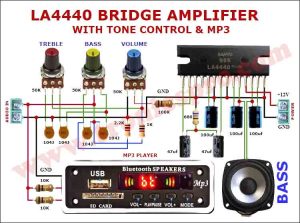

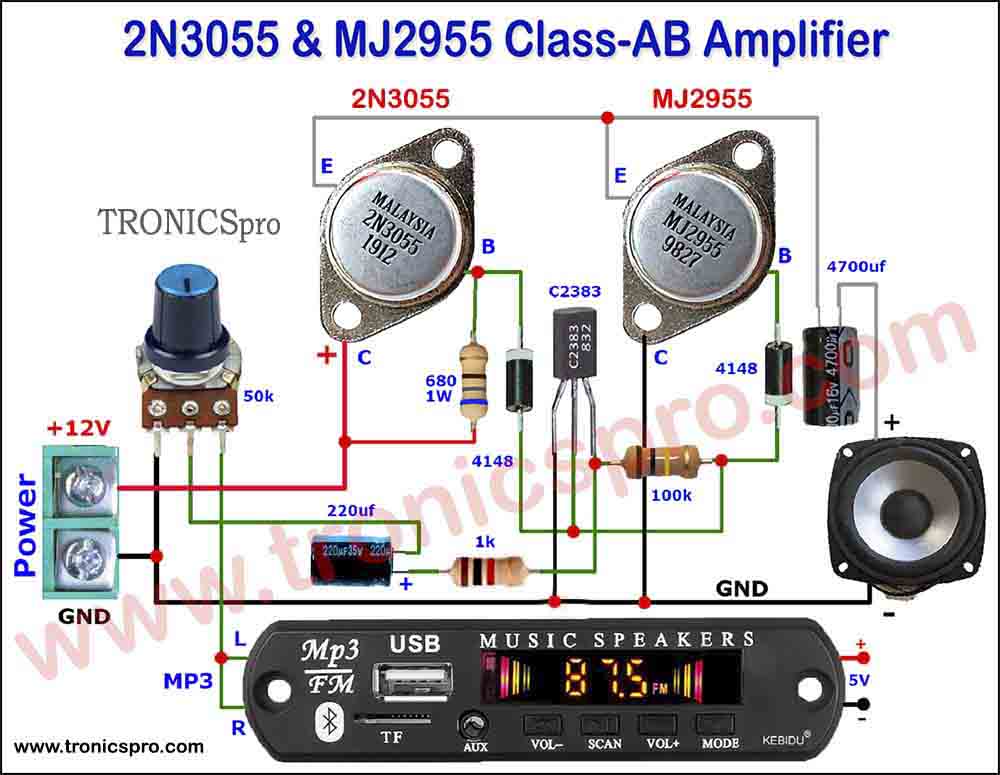

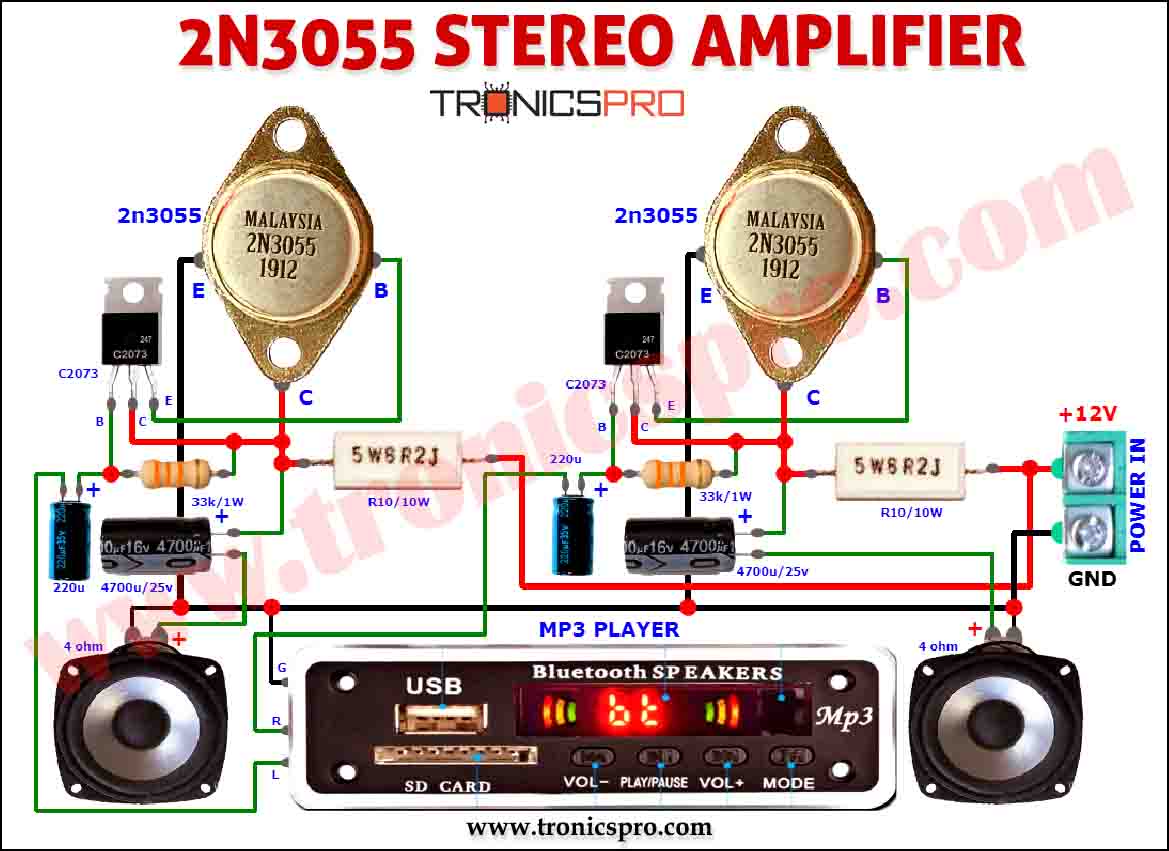
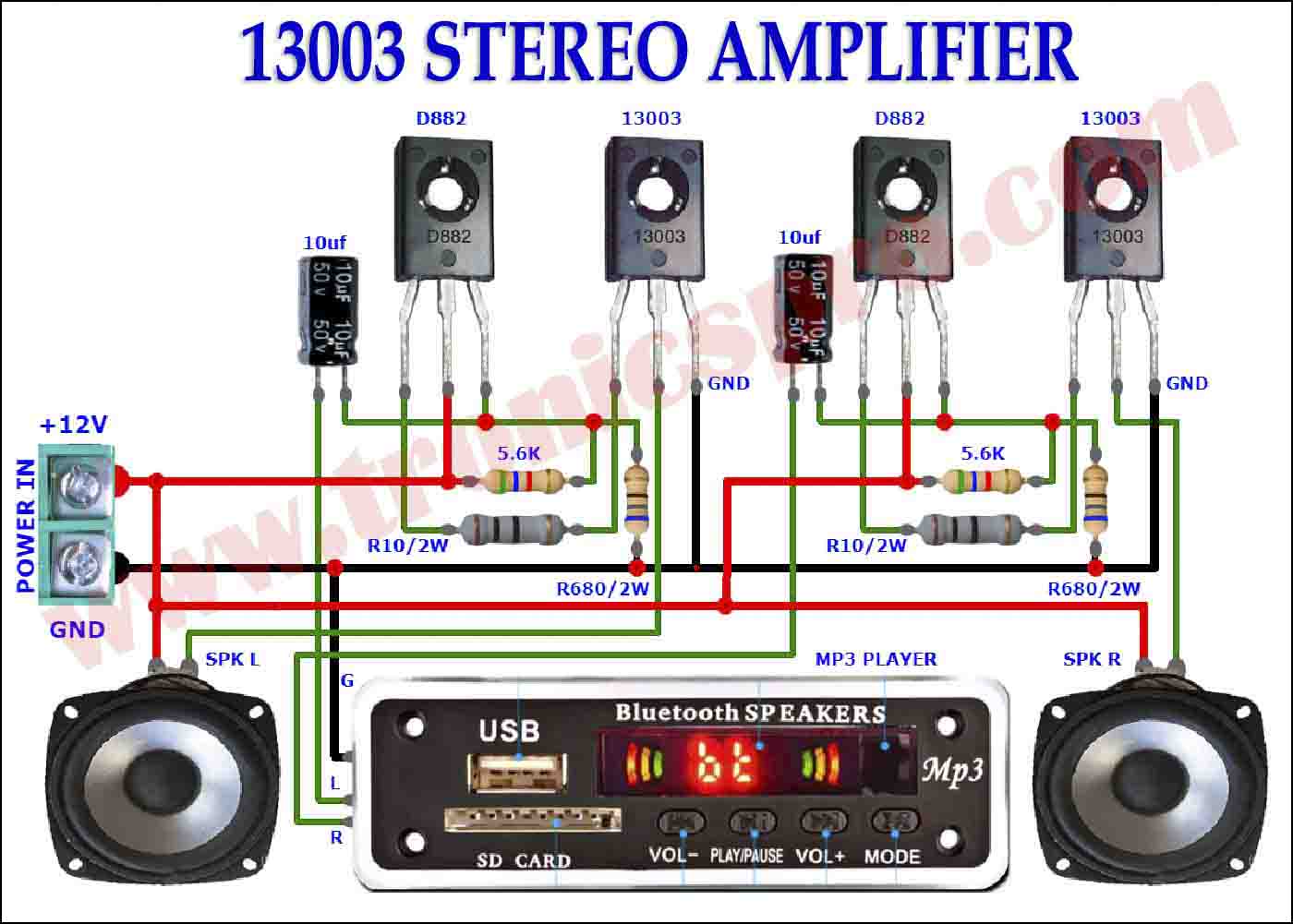

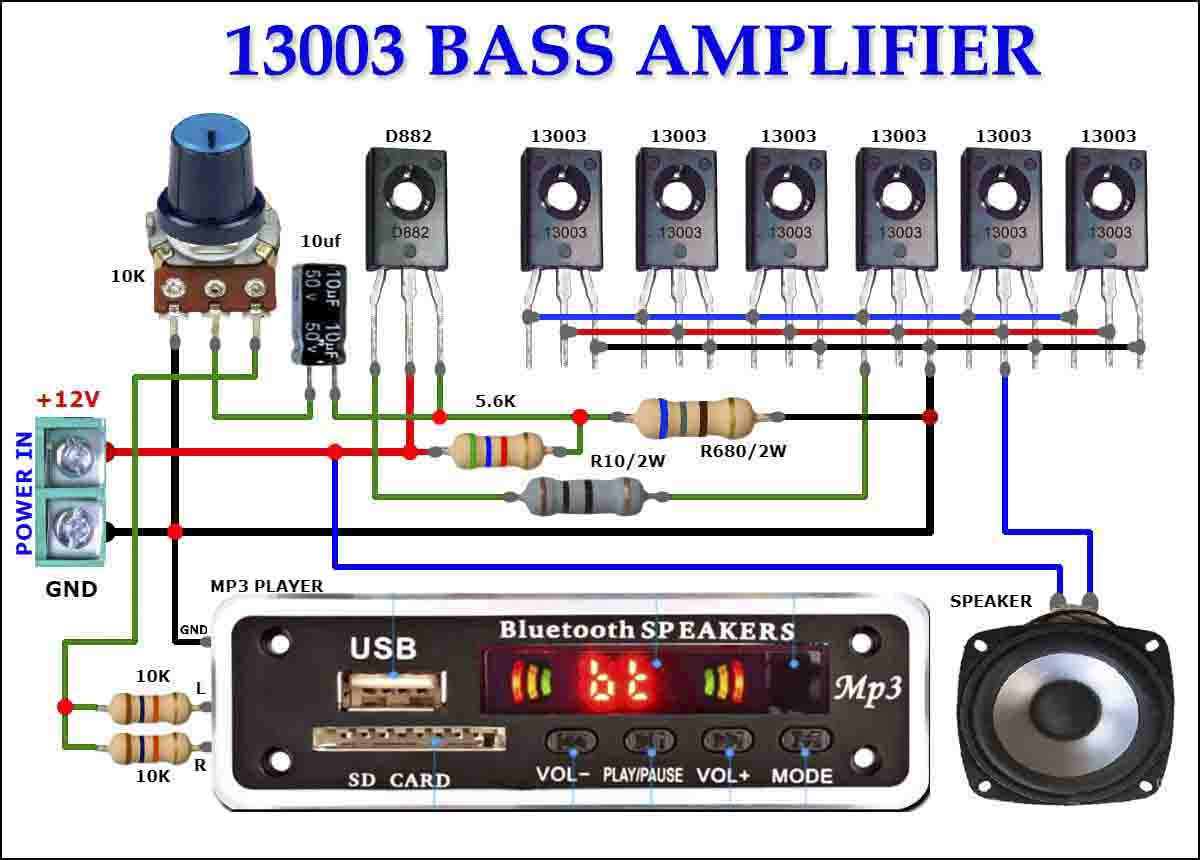
Components List
of 200W RMS Power Amplifier
- D1047 Transistor x 2
- B817E Transistor x 2
- A1015 Transistor x 3
- TIP41C Transistor x 2
- TIP42C Transistor x 2
Resistors:
- 6.8 ohms / 1W Resister x 2
- 100 ohms / 1W Resister x 2
- 18K – 1/2W Resister x 2
- 1K – 1/2W Resister x 1
- 10 ohms / 1W Resister x 2
- 270 ohms – 1/2W Resister x 1
- 10K – 1/2W Resister x 1
- 330 ohms / 1/2W Resister x 1
- 56 ohms / 1/2W Resister x 1
- 27 ohms / 1W Resister x 1
- 820 ohms – 1/2W Resister x 1
- 0.47 ohms / 5W Resister x 4
Capacitors:
- 0.1uF/100v x 2
- 47uF/63v x 1
- 2.2uF/100v x 1
- 330pF (ceramic) x 1
- 4700uF/63v x 1
Miscellaneous:
- 1N4004 Diode x 5
- Coil 10 turns with 1/4 copper core 18 x 1
- 7 amp 33-0-33v Transformer x 1
Construction of 200W RMS Power Amplifie
The 200W RMS power amplifier using D1047 and B817 transistors requires several components, including resistors, capacitors, diodes, and most importantly, the transistor pairs. The schematic of the circuit is relatively simple and can be easily built by electronics enthusiasts with some experience. The circuit diagram consists of two stages, the pre-amplifier stage, and the power amplifier stage.
The pre-amplifier stage includes a differential amplifier using three A1015, two pairs of TIP41 and TIP42 transistors, which provide initial amplification for the input sound signal. The amplified signal is then fed to the power amplifier stage, which consists of the D1047 and B817 transistors. Each transistor pair works in a push-pull configuration, driving the speaker in opposite phase. This eliminates any DC offset and provides high-quality sound output.
The power amplifier also includes several protection circuits, such as over-current and over-temperature protections, that ensure the circuit remains safe and reliable. The power supply for the amplifier uses a 33V-0-33V AC transformer, which provides the required voltage for the D1047 and B817 transistors. The circuit also includes a soft-start circuit, which slowly ramps up the voltage to the amplifier to prevent any voltage spikes that could damage the circuit.
Conclusion:
The 200W RMS power amplifier using D1047 and B817 transistors is a reliable and cost-effective solution for audio enthusiasts and professionals who demand high-quality sound. The design uses the class-AB amplifier configuration, providing high efficiency and low distortion. The amplifier is relatively easy to build, and the components are widely available, making it an ideal choice for beginners and intermediate electronics enthusiasts.
Overall, the amplifier circuit is an excellent choice for those who want to experience high-quality sound output. The amplifier provides ample power to drive loudspeakers and other audio devices, and the protection circuits ensure that the amplifier remains safe and reliable. With some experience in electronics and a few components, anyone can build a high-quality power amplifier that can provide a lifelike sound experience.
More projects, You may like:
- Video Transmitter DIY Homemade FM Radio Transmitter
- Adjustable Power Supply DIY Battery Charger
- 12V-220V 500 Watt inverter DIY Homemade
- 12V-220V H-Bridge Inverter DIY Homemade
- MPPT Solar Charge Controller DIY Homemade
- 18650 battery bank free charge protection module
- D718 B688 Bass Amplifier Homemade DIY
- C5200 Bass Amplifier DIY Homemade with Volume
- DIY LA4440 bass amplifier homemade
- C5200 A1943 TDA2030 Amplifier DIY Homemade






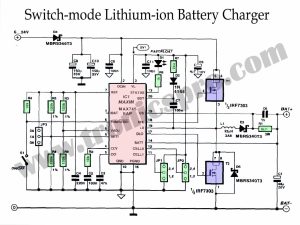







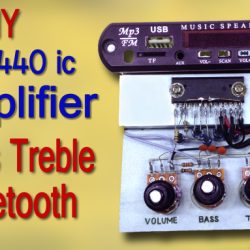

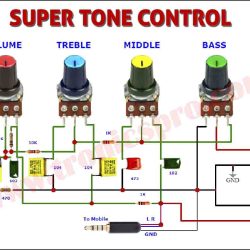
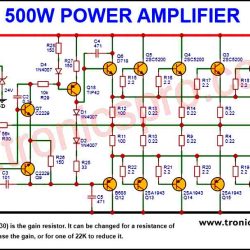










Super stuff!!
Thanks dear for visiting site.